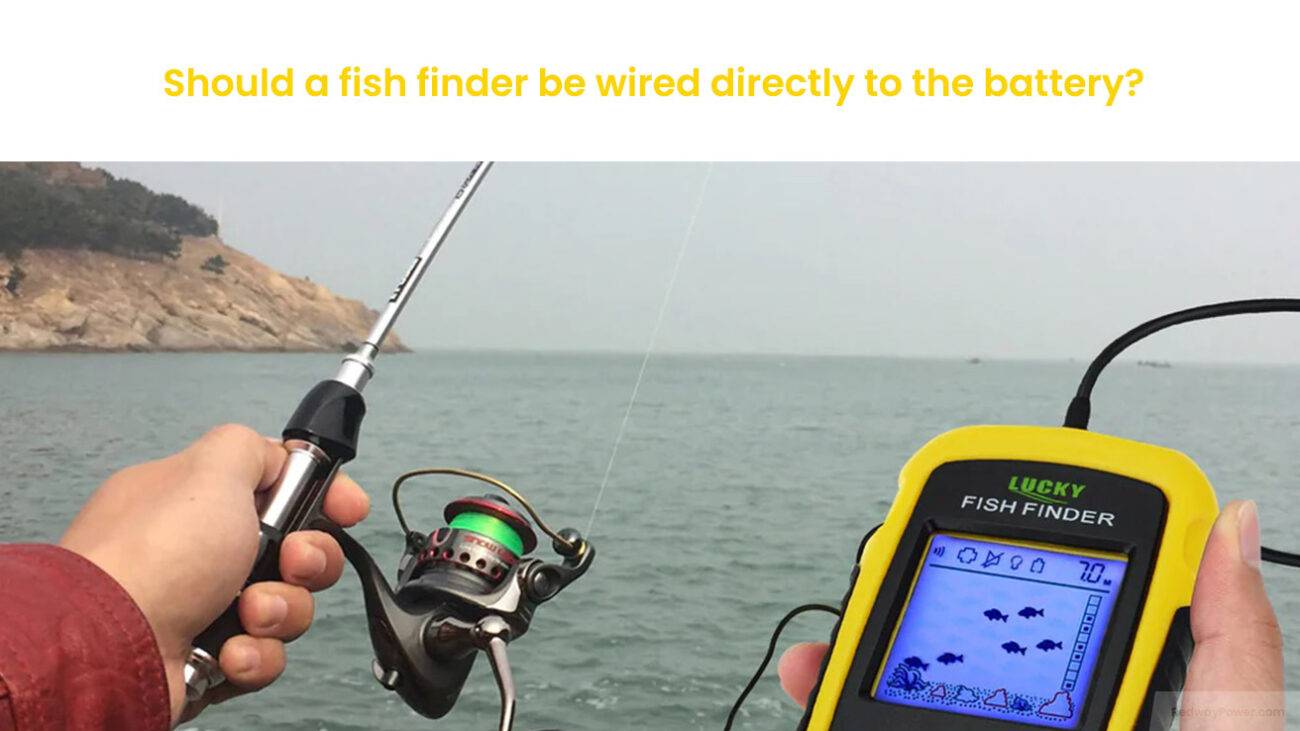Do you love fishing? Many people enjoy fishing as a hobby. Using a fish finder can help you catch more fish. But how do you power your fish finder? Should you wire it directly to the battery? Let’s find out.
What is a Fish Finder?
A fish finder is an electronic device. It helps you locate fish underwater. It sends sound waves underwater. These waves bounce back when they hit something. The device shows you where the fish are. Fish finders can make fishing easier and more fun.
How Does a Fish Finder Get Power?
Fish finders need power to work. They usually get power from a battery. You can connect your fish finder to the boat’s battery. This gives it the power it needs. But how should you connect it?
Wiring Directly to the Battery
You can connect your fish finder directly to the battery. This is one way to power the device. But is it the best way? Let’s look at the pros and cons.
Pros Of Direct Wiring
- Easy to Set Up: Direct wiring is simple. You just connect the wires to the battery.
- Stable Power Supply: Your fish finder gets a steady power supply.
- Less Interference: Fewer devices connected means less chance of interference.
Cons Of Direct Wiring
- Battery Drain: The fish finder can drain your battery. This can be a problem if you use other devices.
- Safety Issues: Direct wiring can be risky. If not done right, it can cause problems.
- Complex Maintenance: Checking and fixing connections can be hard.
Using a Fuse Block
Another way to connect your fish finder is using a fuse block. A fuse block helps distribute power. It also protects your devices. How does it compare to direct wiring?
Pros Of Using A Fuse Block
- Safety: Fuse blocks have built-in fuses. They protect against short circuits.
- Easy Maintenance: They make it easier to check and fix connections.
- Multiple Devices: You can connect many devices to a fuse block.
Cons Of Using A Fuse Block
- Complex Setup: Setting up a fuse block can be more complex.
- Cost: Fuse blocks can be more expensive.
Which is Better?
So, should you wire your fish finder directly to the battery? Or use a fuse block? It depends on your needs. If you want a simple setup, direct wiring is good. If you want safety and flexibility, use a fuse block.

Credit: www.redwaypower.com
Steps for Direct Wiring
If you choose direct wiring, follow these steps:
- Turn Off the Battery: Make sure the battery is off.
- Check the Wires: Ensure the wires are in good condition.
- Connect the Positive Wire: Attach the positive wire to the positive battery terminal.
- Connect the Negative Wire: Attach the negative wire to the negative battery terminal.
- Secure the Connections: Make sure the connections are tight and secure.
- Turn On the Battery: Turn the battery back on and test the fish finder.

Credit: www.reddit.com
Steps for Using a Fuse Block
If you choose a fuse block, follow these steps:
- Turn Off the Battery: Make sure the battery is off.
- Install the Fuse Block: Install the fuse block near the battery.
- Connect the Fuse Block to the Battery: Attach the fuse block to the battery.
- Connect the Fish Finder: Attach the fish finder to the fuse block.
- Check the Fuses: Ensure the correct fuses are in place.
- Turn On the Battery: Turn the battery back on and test the fish finder.
Frequently Asked Questions
Why Wire Fish Finder Directly To Battery?
Wiring directly ensures stable power. Reduces interference. Protects the device.
Is It Safe To Wire Fish Finder Directly?
Yes, it’s safe. Use proper fuses and connectors to avoid issues.
Can Wiring Affect Fish Finder Performance?
Yes, poor wiring can cause interference. Direct wiring provides stable power.
What Tools Are Needed For Wiring A Fish Finder?
Basic tools: wire cutters, crimpers, connectors, and a fuse holder.
Conclusion
Wiring your fish finder directly to the battery is simple. It gives a stable power supply. But it can drain your battery. Using a fuse block is safer and more flexible. It protects your devices. The choice depends on your needs. Choose the method that works best for you. Happy fishing!
